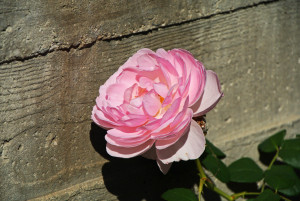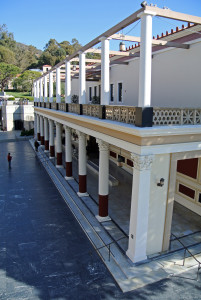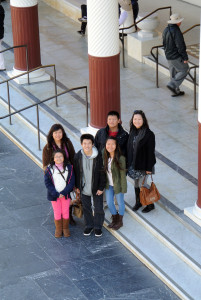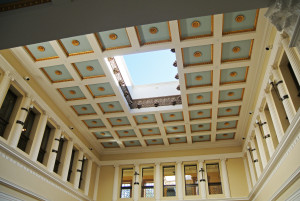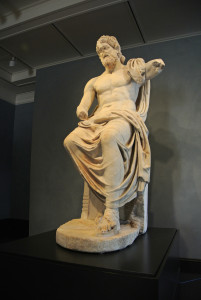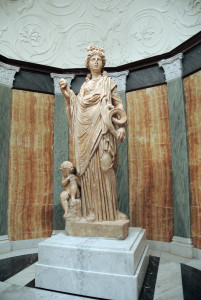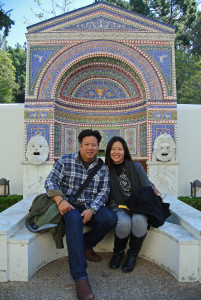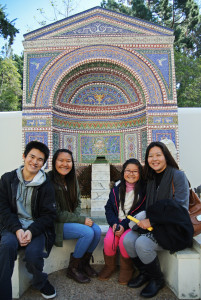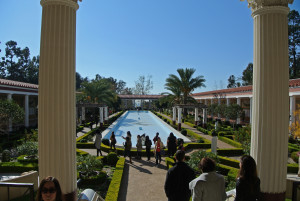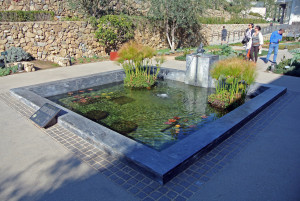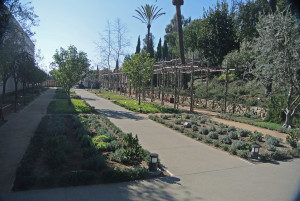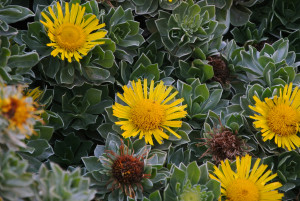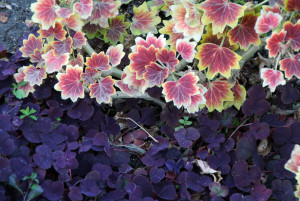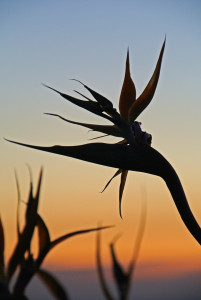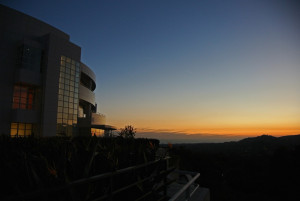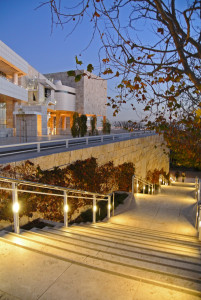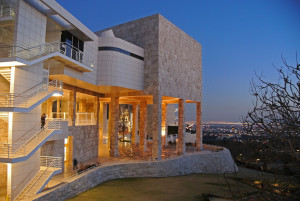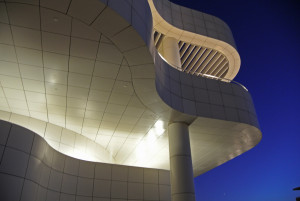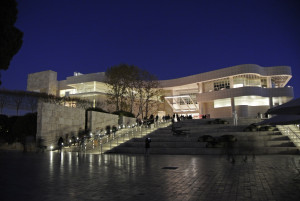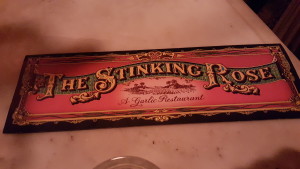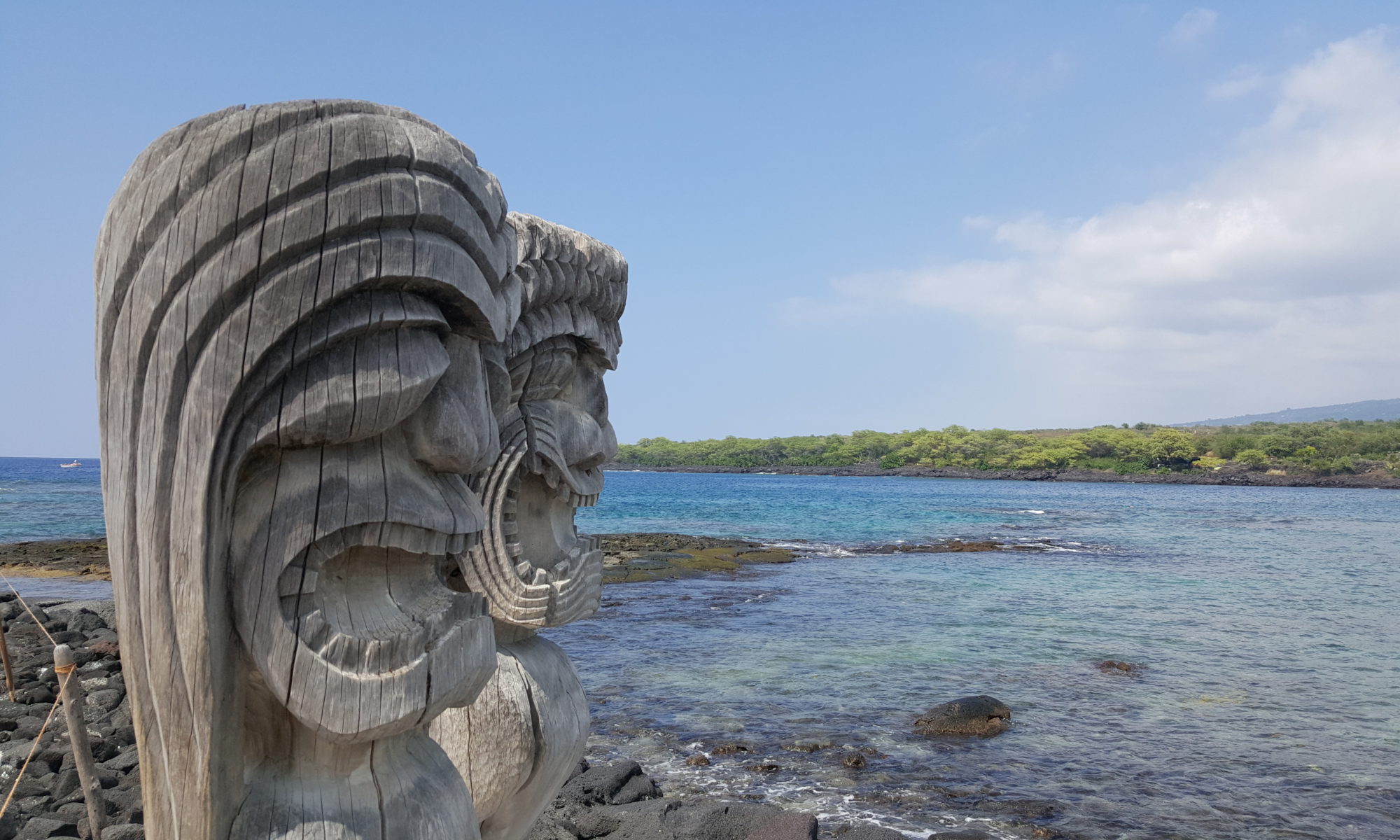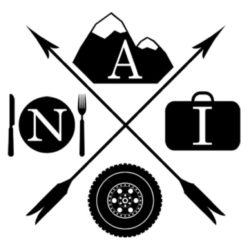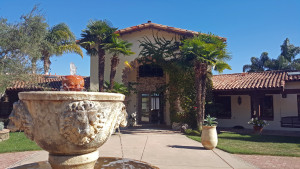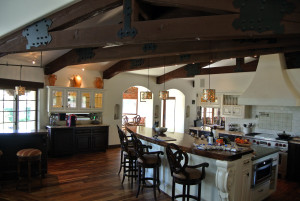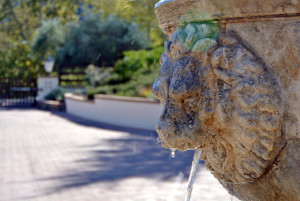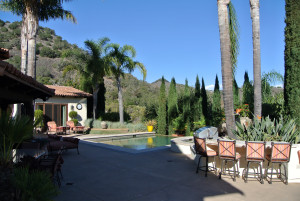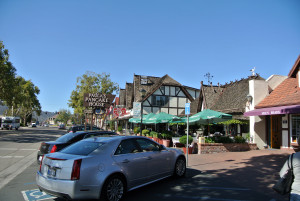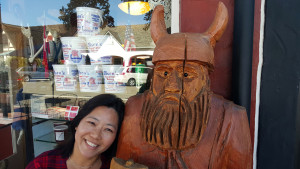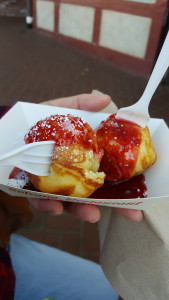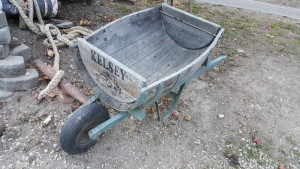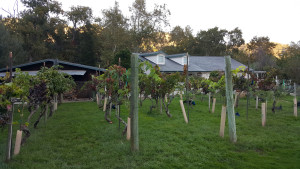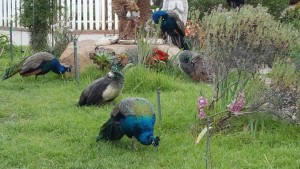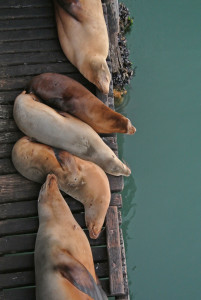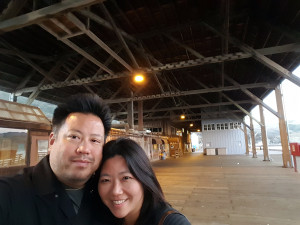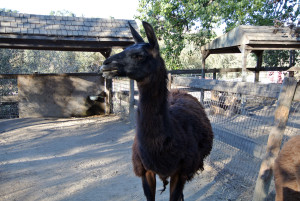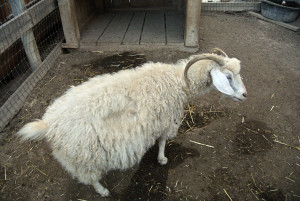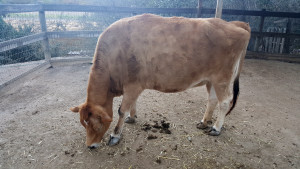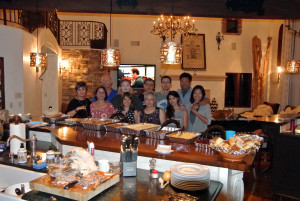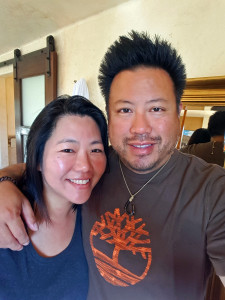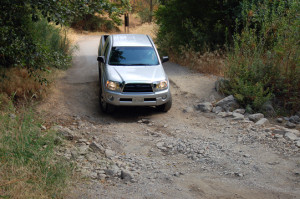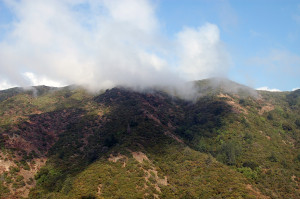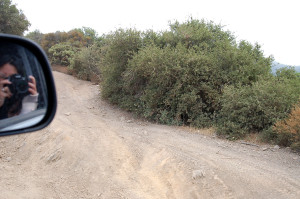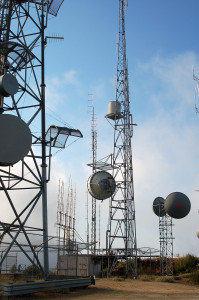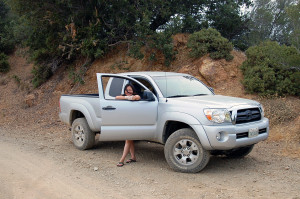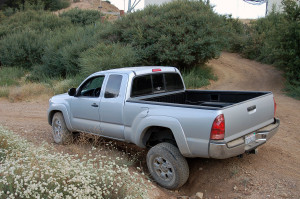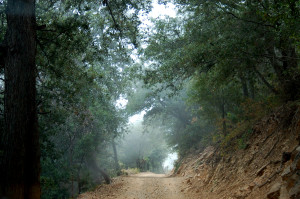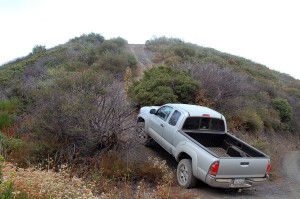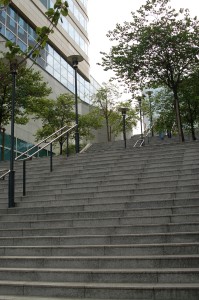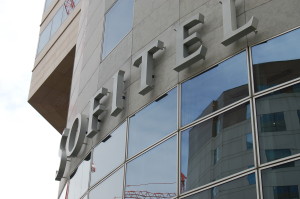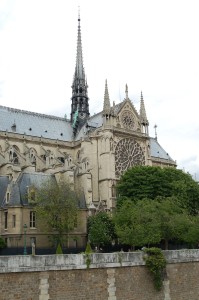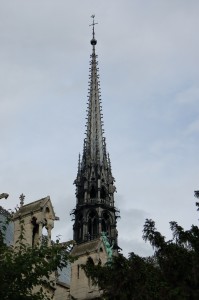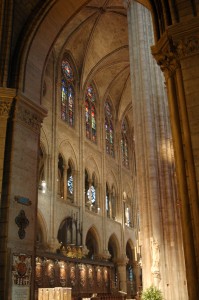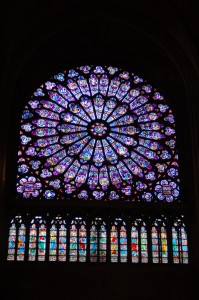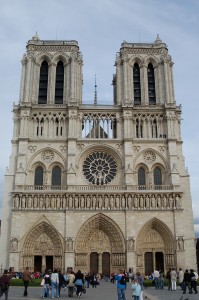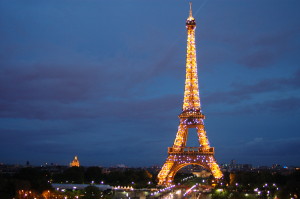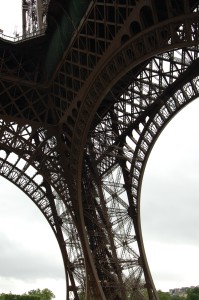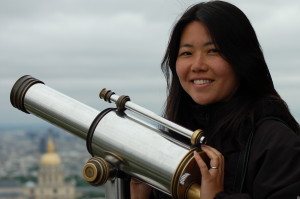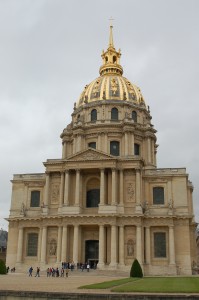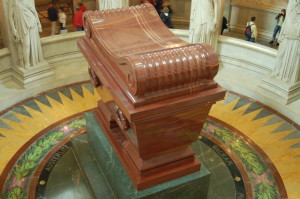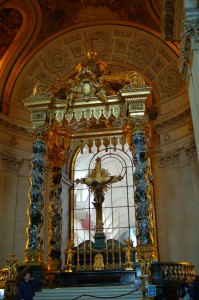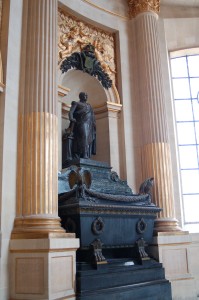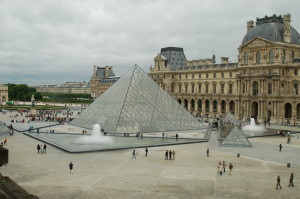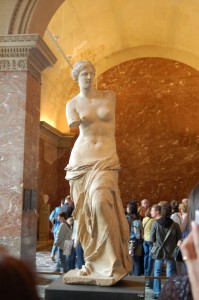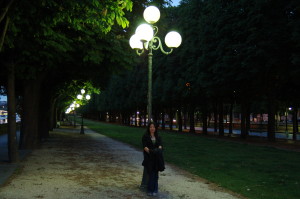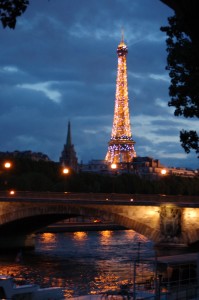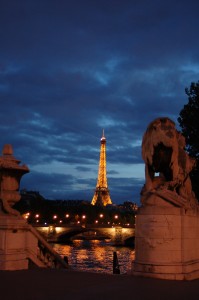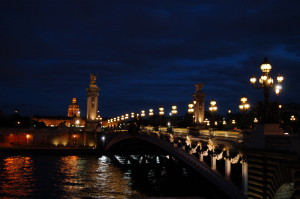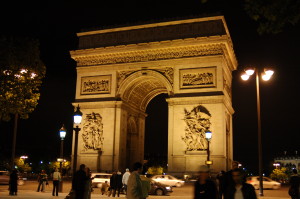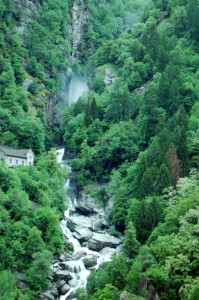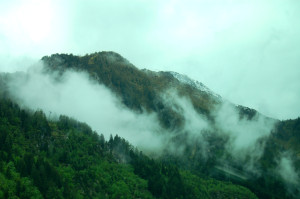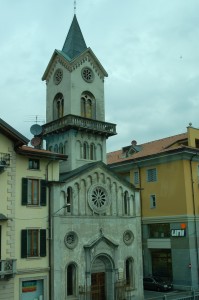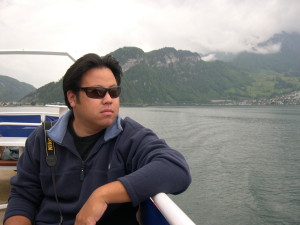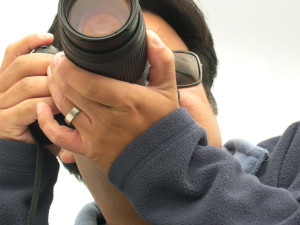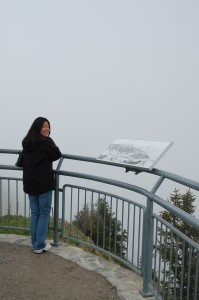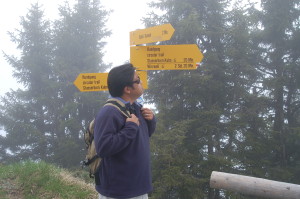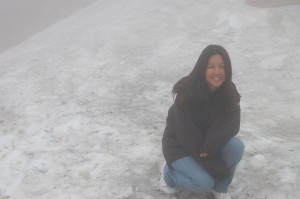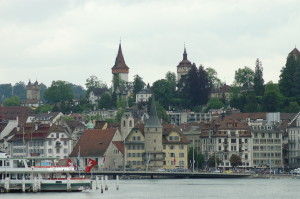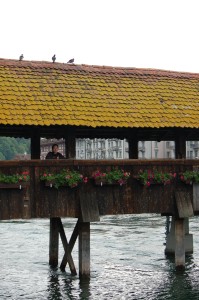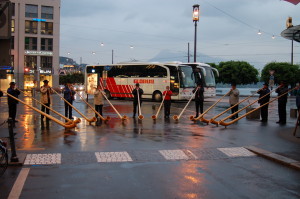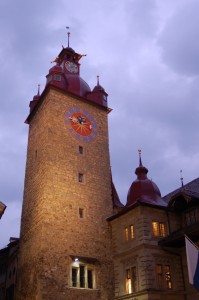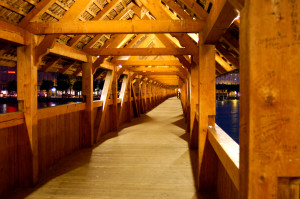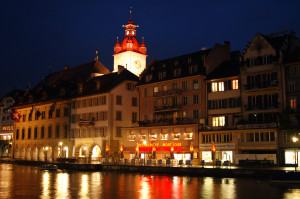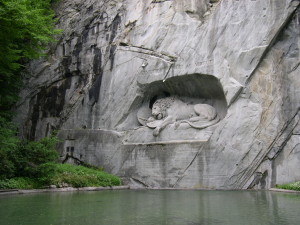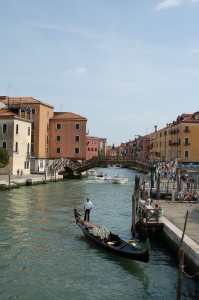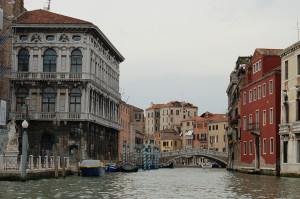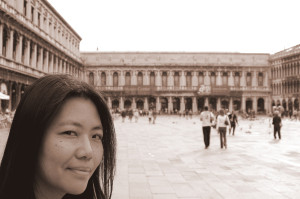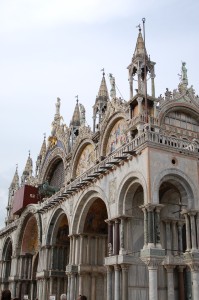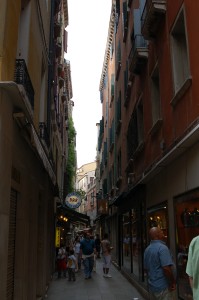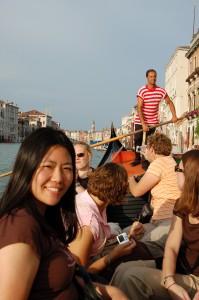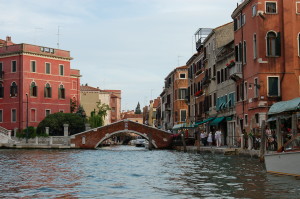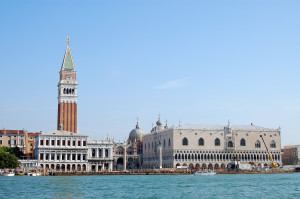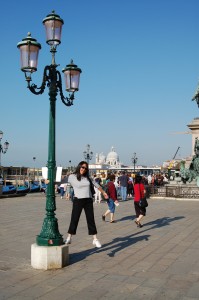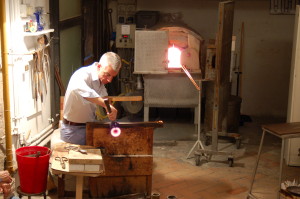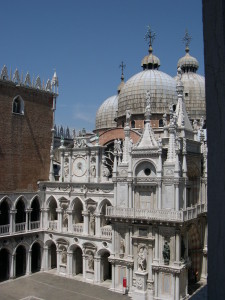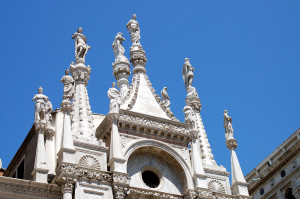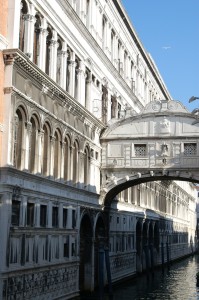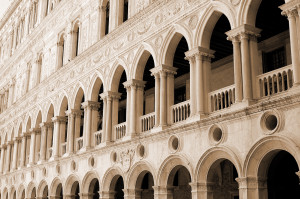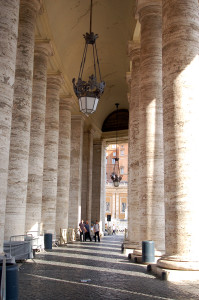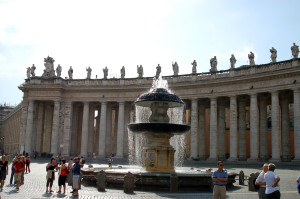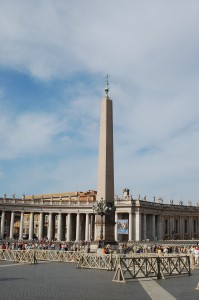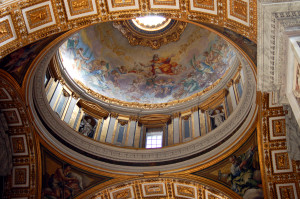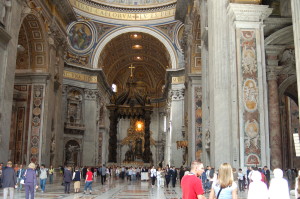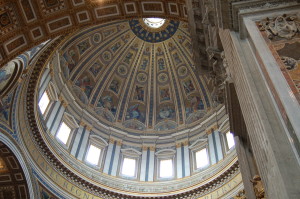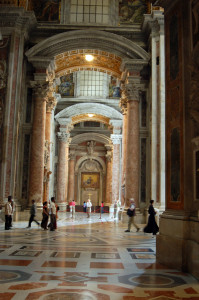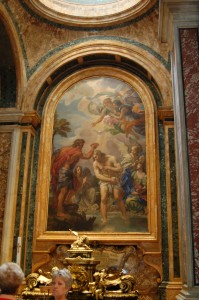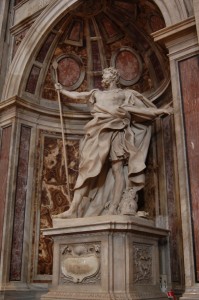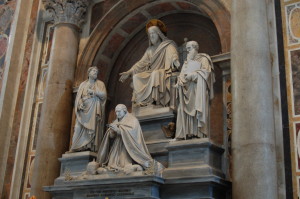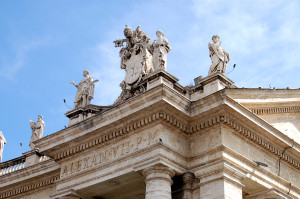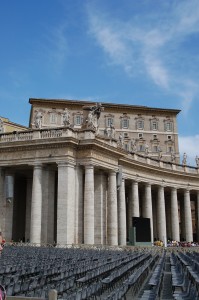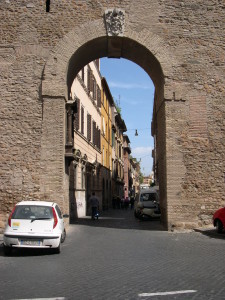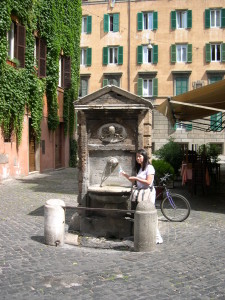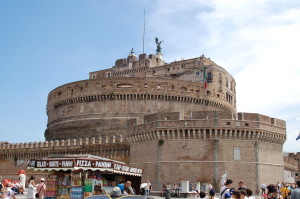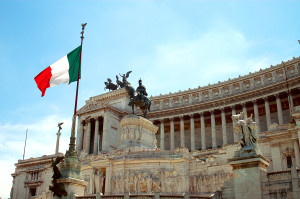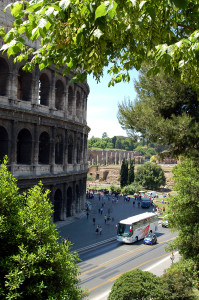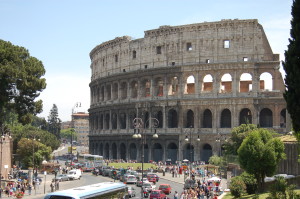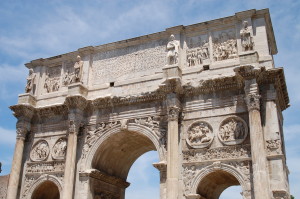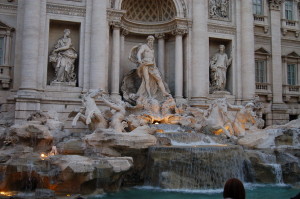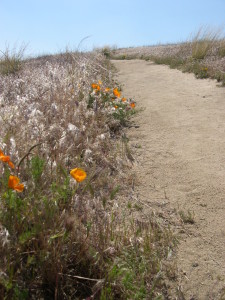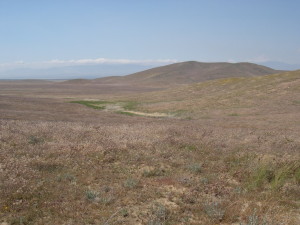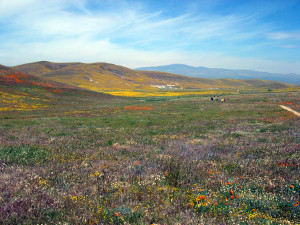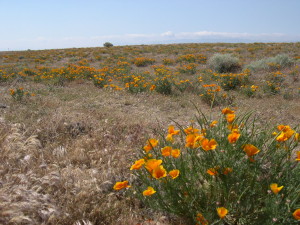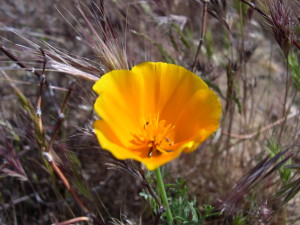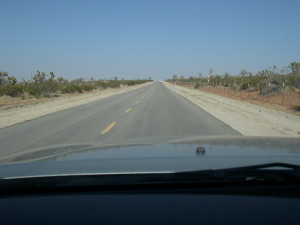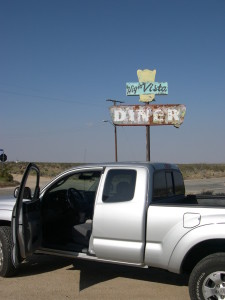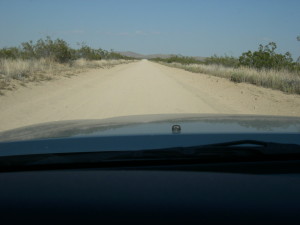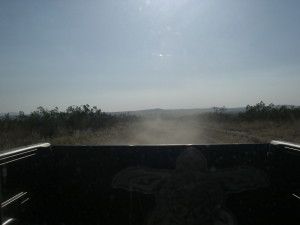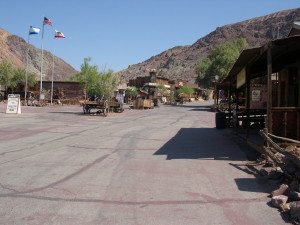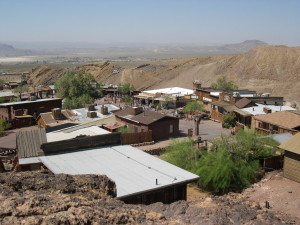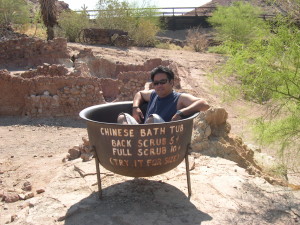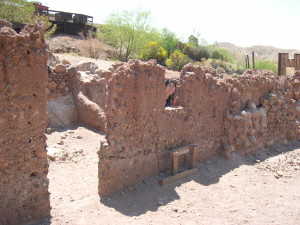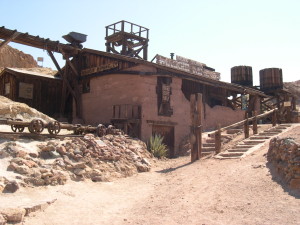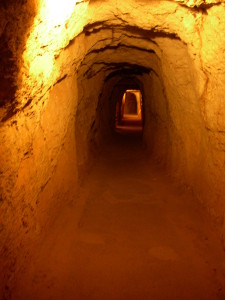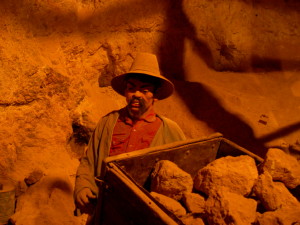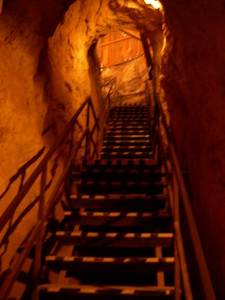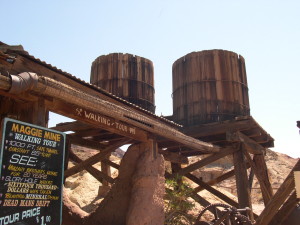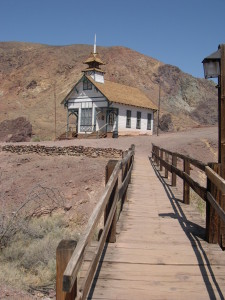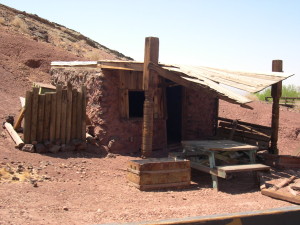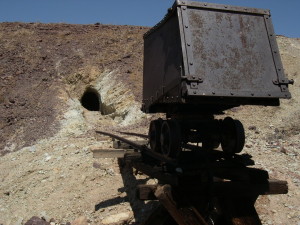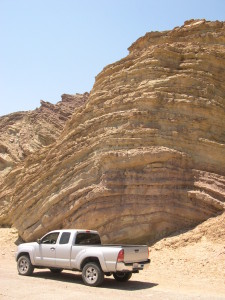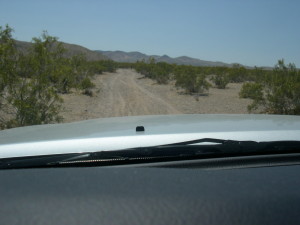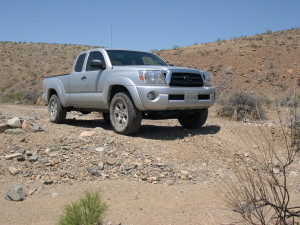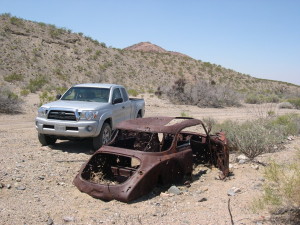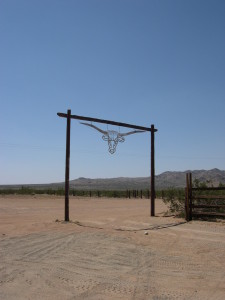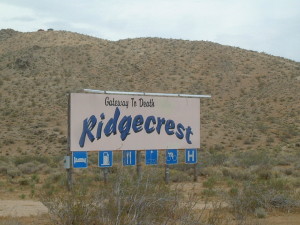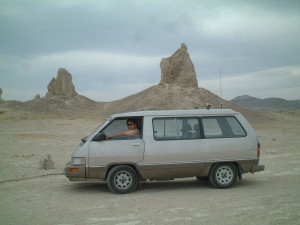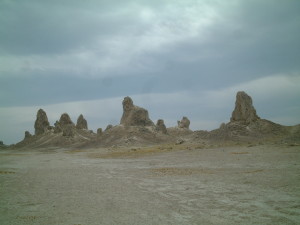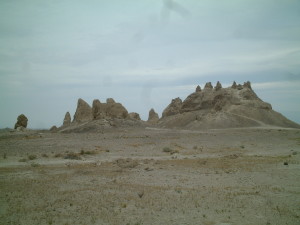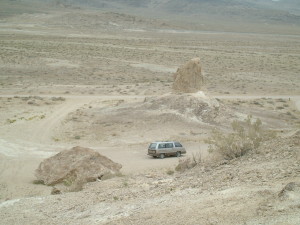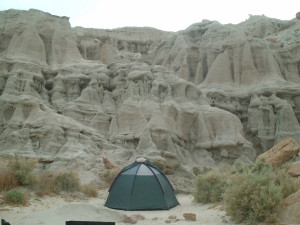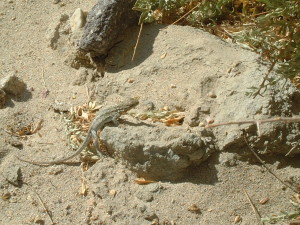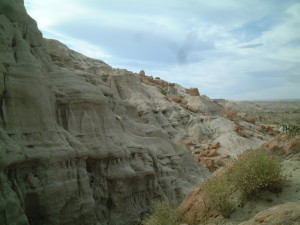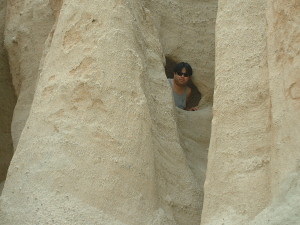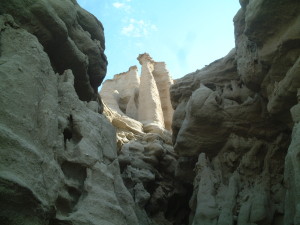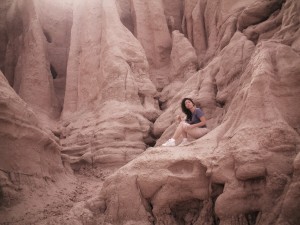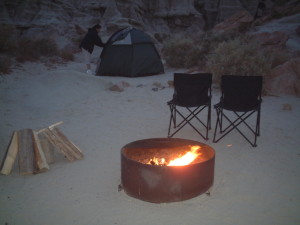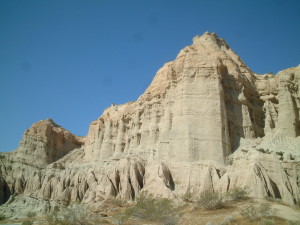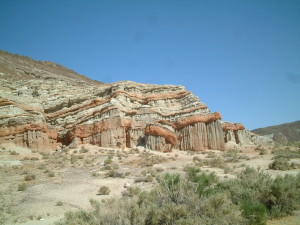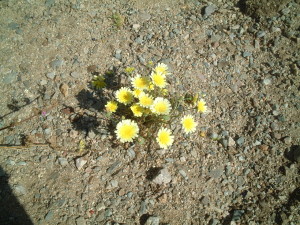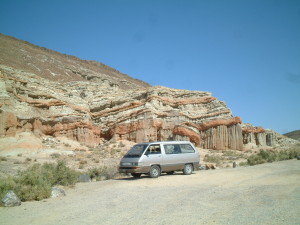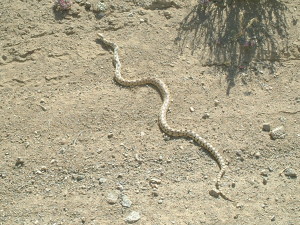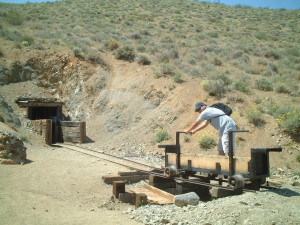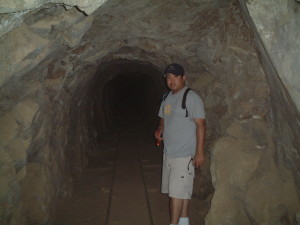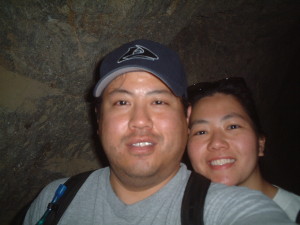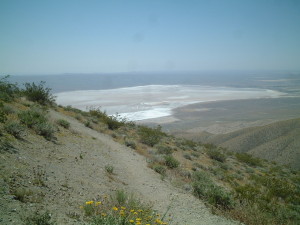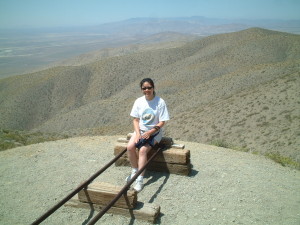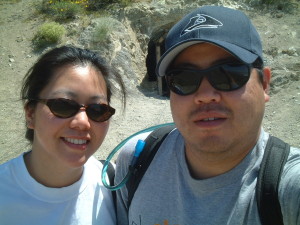Follow us on instagram @adventurenotincluded or for more photos, check out our Flickr album here.
With friends visiting from out of town, wanting to experience the solitude and peaceful beauty of the desert, we had planned an epic trip through Death Valley. Rhyolite, Titus Canyon, Scotty’s Castle, Ubehebe Crater, Racetrack Playa and then down through the valley proper to visit Badwater, Natural Bridge, West Side Road and finally out through the Harry Wade Escape Route… all for naught as the biggest storm to hit in centuries slammed into the park closing down the entire park. People got stranded all over the park and tales of unbelievable storm damage started trickling out. There we were, in Las Vegas… North Las Vegas at that… on Fremont Street… the exact opposite of solitude and peaceful beauty… what to do? Well, here is where our adventure begins!
We are staying at the Downtown Grand which was recently remodeled and very inexpensive and since we were meeting up with some friends that were on their way back from Yellowstone National Park it seemed like a good spot close the freeway. the hotel overall was nice and for the price its hard to complain but there were two things that will keep me from returning; 1) the noise coming from Fremont Street was pretty intrusive, now for some who are here for things other than getting a good nights sleep so you can go wandering through the desert the next morning it may be acceptable but for us it was difficult to drown out… 2) the showers have no doors, or curtains… just this half glass wall thing that is just plain stupid, EVERYTHING in the bathroom gets splashed. I realize I’m paying only $40 a night but hey, can I get a curtain please?? Okay, rant over… let’s find some food!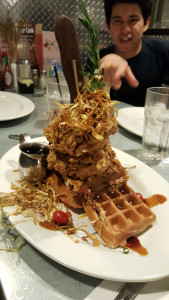
We need to get some grub so we look up what’s close by and remember that our good friends Shaun and Bobby had eaten at a place close by. This is Hash House a GoGo and their Sage Fried Chicken and Waffles. Our friend Kevin is pointing out the unbelieveable portions that are served here in the States and that people just cannot believe that Americans eat so much! This could easily feed two or more and it was very tasty, although the serving size was a little over the top. We discussed options for the morning and decided that we’ll regroup in the morning after gassing up and figure out where to go. Everyone had a great attitude about the weather and we figured to stay flexible about where we go.
So the next morning, after some coffee and listening to weather reports and traffic reports we finally make the call that we have to give up trying to get into Death Valley. The northern route through Beatty was closed entirely and the road that drops in from the Bonnie Claire got completely wiped out. the southern routes through Baker remain open only to Ashford Mill and so the entire park was getting shut down as the rangers went out and made damage assessments. I made the call that we should head into the Mojave Preserve instead, that although they may have gotten hit by some bad storms, they rarely close roads and we would at least have a chance at finding a campsite and some interesting things to do. With that we all jumped into our trucks and headed south into Primm to gas up. The plan was to jump onto the Union Pacific service road at Primm and head down the Nipton-Desert Road to Nipton and then head into the Preserve at Ivanpah siding, visit Goldome Mine, Rock Springs and head down Black Canyon Road to find a campsite.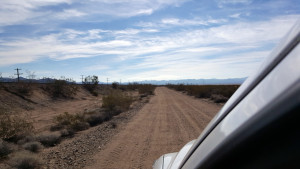
Hey, this looks pretty good… not even that wet!
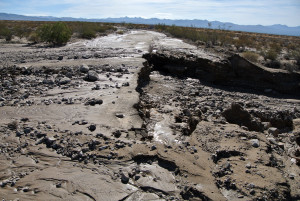
Oops, spoke too soon!
I’ve been driving down this service road and the connected Nipton-Desert Road for years and I’ve never seen it this badly damaged. Huge washouts, mud flows and standing water all along the route. It made for a mildly exciting drive with only one real washout that I needed to get out and survey before we crossed. But soon enough we reached Ivanpah siding and we headed up into the hills towards Goldome Mine. Only recently abandoned in the 1980’s this place was very well preserved when we first visited a couple of years back but now it seems that people are vandalizing the place. We spent awhile here exploring the place and burning off a little extra energy from the long drive but soon we wanted to find a nice place to make some lunch so we pushed onward.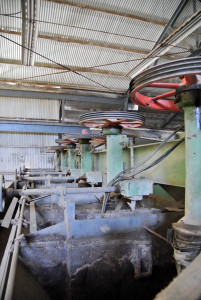
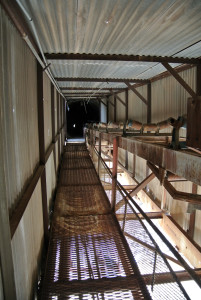
Down Lanfair Road and then over on Cedar Canyon Drive which parallels the Old Mojave Road as it passes through this area, near to where the two intersect is Rock Springs and Burt Smith’s cabin. Here under an old juniper tree is a picnic table with a great expansive view of the surrounding desert. we stopped here to make lunch and make use of the vault toilet that the National Park Service installed a few years ago.
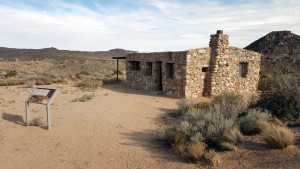
Bert George Smith was a World War I veteran, who suffered the effects of shell shock and was a victim of poison gas. The Bureau of Veterans Affairs sent him to live in the desert with the hopes that he would live a longer life, due to the dry climate. He built this cabin in 1929, originally as a wood framed building adding the stone in later years. Despite his short life expectancy, Smith lived at his cabin at Rock Springs until the mid-1950s. He eventually died ina rest home in 1967. There is a trail behind the house that leads over to the springs, it’s a short hike but worthwhile to see a desert spring.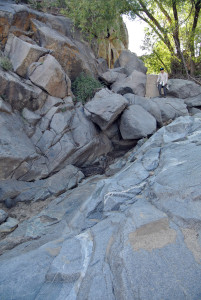
Rock Springs is one in a series of springs that dot the Mojave Desert every 20 to 30 miles, forming a natural travel corridor. This route eventually became known as the Mojave Road. Native Americans from the desert regions around the Coloroado River used this corridor to trade with coastal tribes and later ranchers used it to water thier livestock. In the picture above you can see a dam was built to provide a little extra storage behind it. Today the spring was completely choked out by sand, the deep pools I had seen in the past were completely filled in. Most likely the large storms that passed over the area brought the sand and silt down from the upper basin and filled in the pools. It will take another storm or two to eventually wash out the sediment again.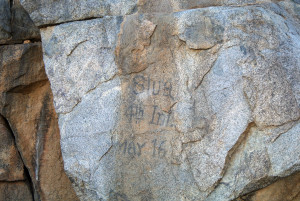
The upper inscription appears to be from the time when the US Army had an encampment here called Camp Rock Springs. Brigadier General James T. Rusling described the encampment in 1866, “Camp Rock Springs itself was a forlorn military post, consisting of one officer and perhaps a dozen men, guarding the springs and the road there. The officer was quartered in a natural cave on the hillside, and his men had ‘hutted’ themselves out on the sand the best the we could”. It was most likely a member of the 4th Infantry Regiment of California Volunteers, “Stuart” probably carved this between 1863 and 1866 when that regiment provided many of the troops to protect the Government Road. Records show at least one Stuart in that regiment during that period. 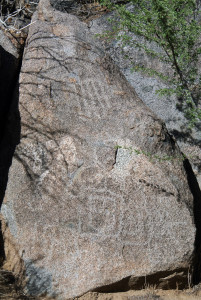
There is evidence of earlier use of these springs as well, in the form of petroglyphs carved into the rocks. Many of these petroglyphs are very faint, indicating they are very old with the abstract style on the lower portion of the rock likely by the local Chemehuevi tribes related to the Southern Paiute Indians and the upper portion with the nonrepresentational geometric designs from a Mohave Culture indigenous to the Colorado River area and related to the Kumeyaay Indians from the south.
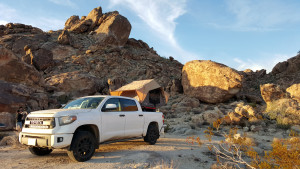
After hiking and spending some time around Rock Springs we headed down the Mojave Road to where it intersects with Black Canyon Road. From here we turn south and drive though the Mid-Hills area and pass by Hole in the Wall where we find our campground, just south of that area in a small turnaround above a small wash I call, Bachelor Wash in honor of our friend, David who spent his bachelor trip camped out in that very wash. Secluded and with a spectacular backdrop we setup camp and settle in for the night. As the stars begin to appear overhead we begin to think, maybe this change of plans wasn’t so bad after all!
The next morning we break camp and head over the Hole in the Wall to use the facilities and stretch our legs. Part of the group continued down the Rings trail while the rest of us hung out at the overlook.
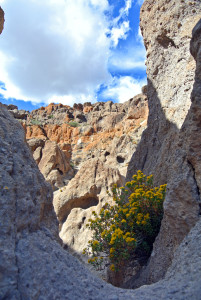
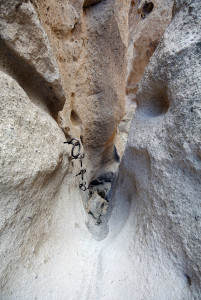
Follow the sign for the Rings Trail down a few boulders into a narrow canyon. Here there are two dry falls on the descent into Banshee Canyon, named for the crying sound that the wind make as it blows through the rock formations. There are two sets of rock-mounted ringbolts which can be used as hand holds and steps to get down to the bottom of Banshee Canyon. This opening quarter mile stretch is the most exciting and many hikers simply turn around at the bottom of the canyon and hike back up over the rings for a 0.5-mile round trip hike. Otherwise, follow the path out the mouth of Banshee Canyon and turn left continuing along the Rings Trail as it wraps around the south side of a rock wall on a gradual course to a trailhead that returns to the Visitor Center.
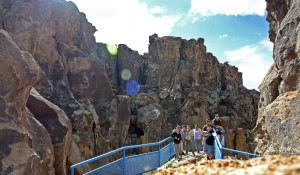
group shot at Hole in the Wall
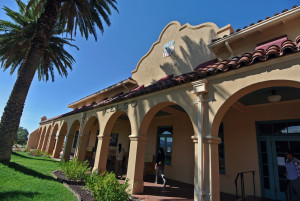
After our hike we feel like eating some lunch and we want to stop by Kelso Depot to see if the lunch counter there is open. The Kelso Depot was constructed in 1924 and included a conductor’s room, telegraph office, baggage room, dormitory rooms for staff, boarding rooms for railroad crewmen, a billiard room, library and locker room. The closing of the nearby Vulcan mine which employed over 2,000 and the use of diesel engines replacing steam resulted in the Union Pacific moving jobs and families out of Kelso. The depot function ended in 1962, although the restaurant and boarding rooms were still in use. The advancement of diesel technology led to fewer and fewer crew members needing to eat or stay overnight, so in 1985 the Union Pacific decided to close the Kelso Depot entirely.
After many years of being unused the Depot was passed into the hands of the National Park Service upon formation of the Mojave National Preserve. The building reopened to the public as the new visitor center for Mojave National Preserve in October, 2005. Former dormitory rooms contain exhibits describing the cultural and natural history of the surrounding desert. The baggage room, ticket office, and two other dormitory rooms have been historically furnished to illustrate life in the depot in the first half of the twentieth century. Downstairs, the Desert Light Gallery features rotating fine art collections by local artists, focusing on the cultural history and natural splendors of Mojave national Preserve.
The Kelso Depot lunch counter, named The Beanery recreates the original lunch counter that was here in the 20’s and 30’s where you can enjoy a hot cup of coffee, cold ice cream, or a deli sandwich in this nicely restored and historic train depot. Unfortunately for us the Depot was closed that day due to some budget cuts and shortage in staff. If you are visiting, check their website for the current schedule. We hung out here, again to use the facilities (see a common theme here?) and then headed off to the Kelso Dunes for a quick hike!
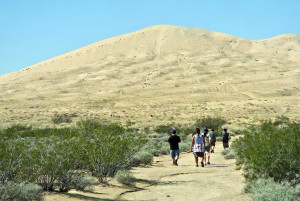
The Kelso Dunes cover 45 square miles of desert with the tallest dunes over 650 feet. While a few if us hiked only to the base of the dunes, a couple went to the top. While they were up there the group on the bottom heard the booming noise that these dunes are famous for. The noise is caused by the sand sliding down the dunes. Only a few dunes on earth are capable of making this sound and we were lucky enough to actually hear it. I kept my eye on the impressive clouds that kept rolling past us as I didn’t want to get caught out in the open if a lightning storm decided to pay us a visit.
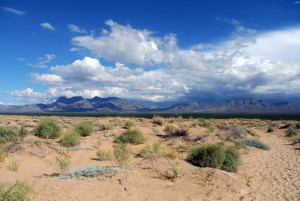
I kept my eye on the impressive clouds that kept rolling past us as I didn’t want to get caught out in the open if a lightning storm decided to pay us a visit. We were fortunate on this trip that the weather cooperated nicely and we didn’t experience any rain or high winds that are pretty common here.
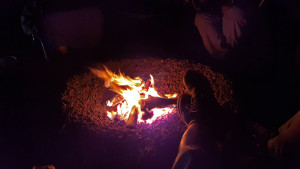
We didn’t get any pictures of the ascent to the top of the mine but it was epic. Getting stuck several times in the deepy rutted and very loose rocky soils it took a lot of time to get up to the top. The Tundra? It walked straight up without any drama or problems.. and Irene was driving! I got out to spot on some tricky areas but she got the truck to the top without much trouble. Kevin’s full size Chevy hit a couple of snags but once in 4 low it got to the top just fine. Mark’s Tacoma… my old truck had some trouble. Getting high centered on the deeply rutted road once and then getting hung up on the spare tire mounted under the bed. Once we got it loose I offered my driving experience and got it up the toughest parts of the road. The one lesson I had was, “if in doubt, throttle it out!” The cinder cone surface of the rocks certainly was not kind to the older BFG Mud Terrains on the truck but without those and the rear lockers it never would have made it up. I gotta say, I still love that Tacoma, it still has been able to follow any 4wd anywhere!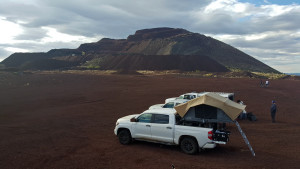
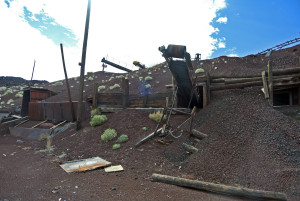
The Aiken Cinder Mine was abruptly shut down and abandoned in the 1990’s when the operators could no longer pay rent on the property. Millions of tons of cinder rock was mined from this ancient volcano and most of it is still in piles around where we camped for the night. The rest was shipped to a company in Las Vegas as road construction material. Although no remediation is planned for this area I noticed that more and more of it is missing everytime I go. Sooner or later this will start to return to a more wild naturalized state and most of the machinery and equipment will just rot away. The piles of mined cinder rock provided a nice sheltered area for our campsite and now I can say that my Tundra has been to the top of a volcano! Just like in the commercials!
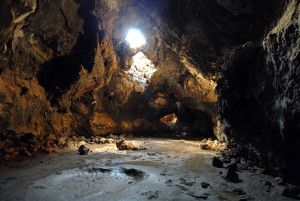
The Mojave Lava Tube was our last stop of the trip and it is one of the most unique places to visit in the Mojave. Formed by flowing lava where the surface has hardened and cooled while the interior of the lava continues to flow leaving a hollow tunnel in its place. When we first found the lava tube there were no directions or even signs at the time. The nice landing and stairs weren’t there, just an old rusted ladder. Not much of a hike and the road leading is well graded dirt. This time was a little different as well with fresh mud flows coating the ground of the tube. It looked like a pretty good flow of water was in the tube recently and uncovered some interesting skeletal remains of local desert dwellers like rabbits and lizards. I really wanted to revisit another site in the nearby Black Tank Wash where a lava arch had formed due to the collapse and erosion of an old lava tube but the road was so rough due to washouts we decided it better to end our trip here.
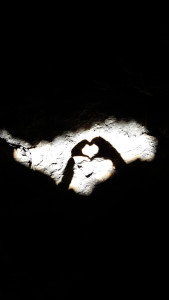
So we head out of the Preserve on Kelbaker Road and head back to civilization. It wasn’t the trip I planned but overall it was a good trip, although I’ve never had a bad trip out to the desert to explore. We got to share some of the reasons why I love this area so much and why I spend so much time exploring out here. So until next time, wander and explore and find your adventure!
Follow us on instagram @adventurenotincluded or for more photos, check out our Flickr album here.
